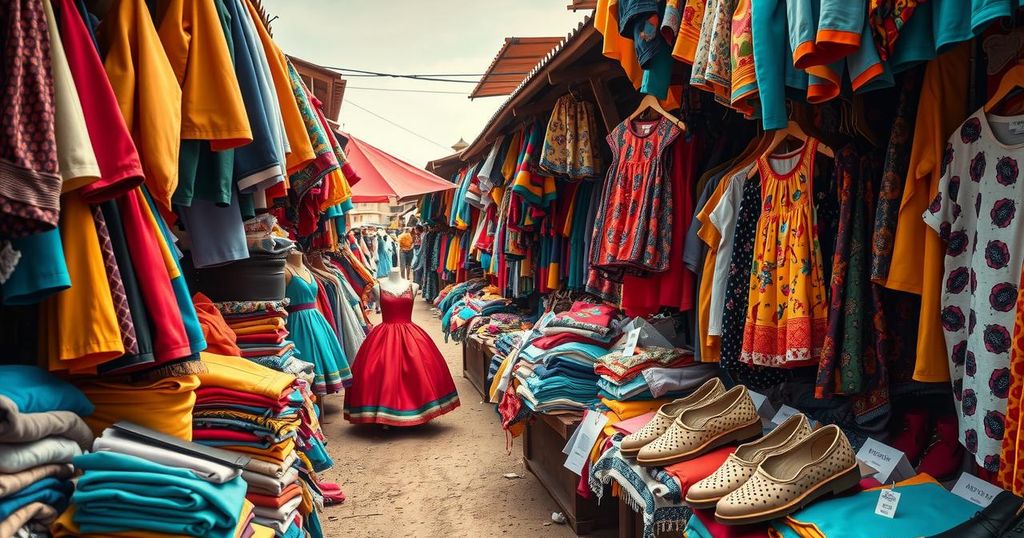Kenya’s mitumba imports have surged to $298 million in 2023, surpassing Nigeria as the largest importer in Africa. This growth, reflecting a 12.45% increase, is driven by demand for affordable clothing despite local textile industry struggles. Policy changes, including tax removals, facilitate cheaper imports, contrasting with restrictive measures in neighboring countries. The debate over mitumba impacts economic strategies and local textile manufacturing efforts.
In 2023, Kenya imported mitumba—second-hand clothing—valued at $298 million (Sh38.5 billion), overtaking Nigeria as Africa’s largest importer. This increase of 12.45% from the previous year’s $265 million reflects rising demand for affordable apparel while domestic textile industries hinder progress. Goods imported include diverse second-hand items from clothing to household textiles.
Despite some East African Community (EAC) countries restricting mitumba to bolster local textile manufacturing, Kenya continues to facilitate significant imports. Neighboring states have enacted higher duties and local incentives on second-hand clothing, amidst growing concerns about smuggling into regional markets. Imported mitumba is subjected to a 35% duty rate or $0.20 per kilogram, whichever is greater.
Kenya’s participation in the African Growth and Opportunity Act (AGOA) complicates the mitumba discourse, as the open border policy for second-hand clothing is essential for maintaining trade benefits. Disparities exist within policymaking views regarding mitumba, with some advocating for the trade as essential for low-income citizens, while others argue it harms local textile industries.
Public sentiment regarding mitumba has been politically charged, especially during election cycles, where former Prime Minister Raila Odinga faced backlash for supporting local textile production, a move perceived as a threat by traders. Similar sentiments have been expressed in recent political discussions, where leaders like President William Ruto capitalized on these issues for support.
Attempts to rejuvenate the local textile sector, including major investments in factories like Rivatex East Africa, face daunting competition from cheaper mitumba imports. Government strategies include the new National Cotton, Textile, and Apparel (CTA) Policy 2024, aimed at strengthening local production and supporting cotton farmers through initiatives like new ginneries and textile value-addition centers. The government also seeks to empower small businesses by enhancing county industrial development centers with tailoring facilities.
Overall, the growing mitumba trade in Kenya signifies both an economic necessity for affordability and a complex challenge for domestic textile industries, which struggle under the weight of international competition and policy shifts favoring used apparel imports.
Kenya’s mitumba market is currently experiencing significant growth, driven by rising demand for affordable second-hand clothing and supportive policy shifts. However, this trend poses challenges for the local textile industry, sparking ongoing debates among policymakers. As the government aims to strengthen local production through new policies and investments, the struggle against the dominance of cheap imports continues to shape Kenya’s economic landscape.
Original Source: eastleighvoice.co.ke






